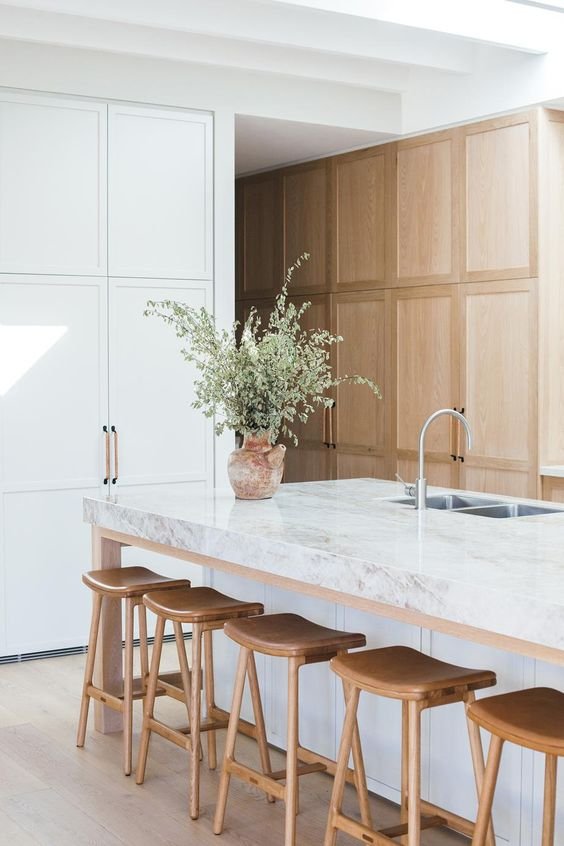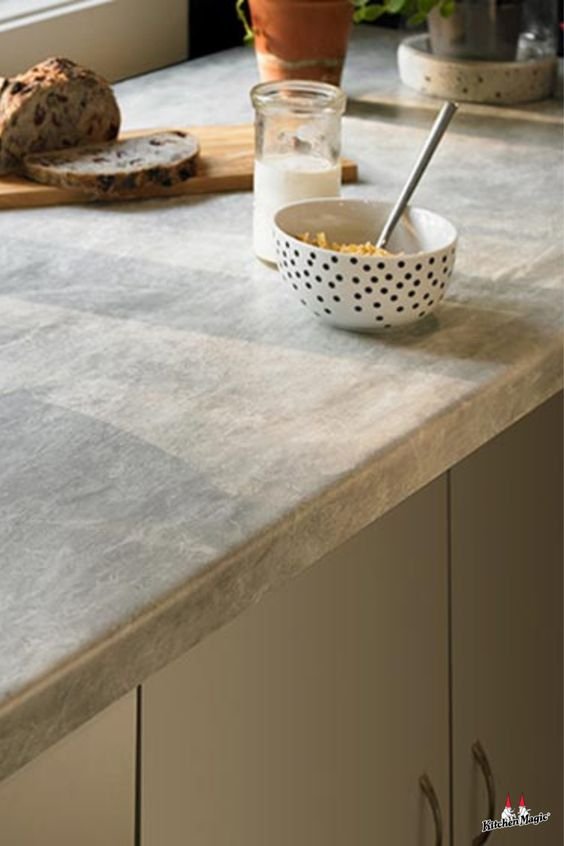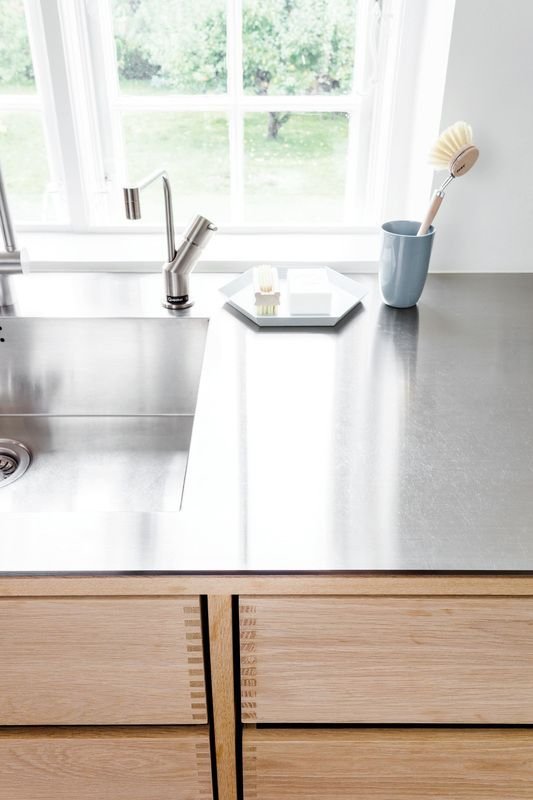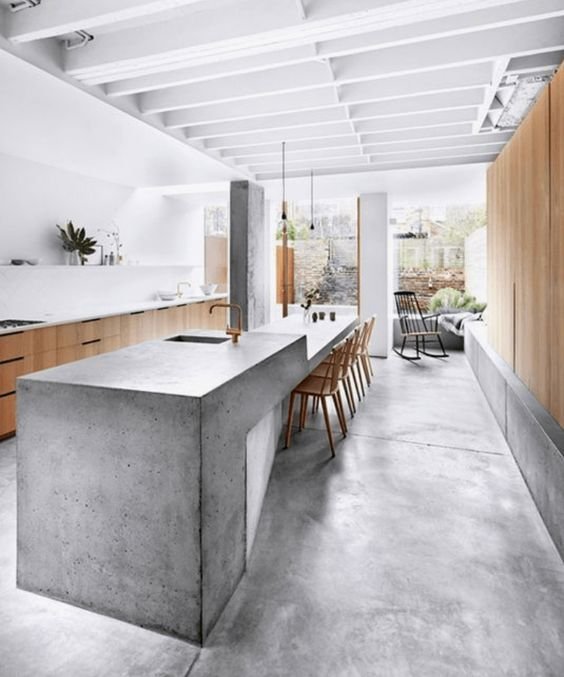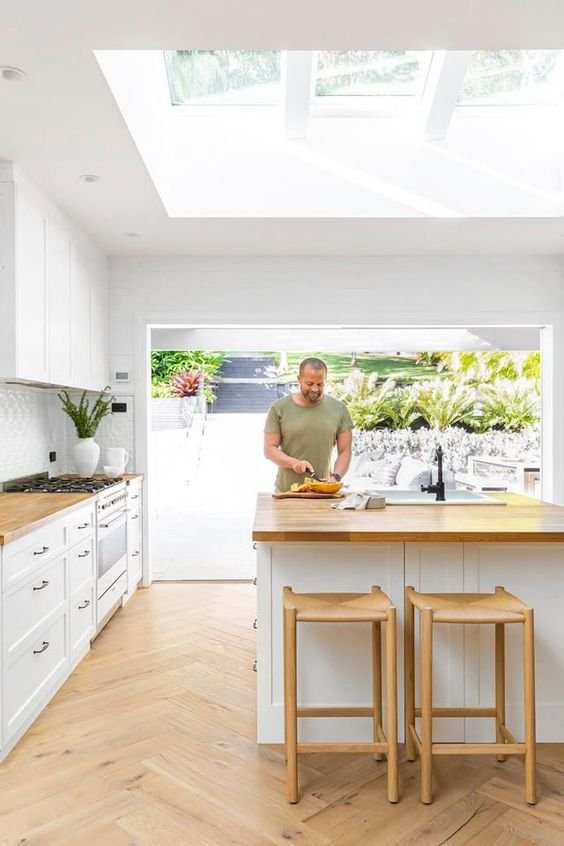The must-know Pros and cons of kitchen Benchtops
The humble kitchen benchtop would have to be the most practically used space in every home. Not only do we prepare meals, but we often use them as a work-from-home space, children’s homework desk and most often, a catch-all for our everyday stuff. But on a design level, benchtops can set the tone and colour palette for the rest of the home.
In the renovation of our own family home, we chose an engineered quartz stone for our benchtops. I cooked many times a day for my three boys and husband, in large quantities as you can imagine! We also loved to entertain as a family, so having lots of bench space was a priority for us. We found the price point of engineered quartz stone to be quite affordable compared to natural stone.
There are so many factors that can affect your decision, such as availability, aesthetics, durability, how you use your kitchen daily and the all-important price! Each benchtop material has its own set of pros and cons you should consider choosing the material that’s right for your needs and lifestyle. Here’s our pros vs cons list of popular benchtop materials.
Pros of granite benchtops
Granite is easy to clean. Keeping your benchtops spotless is always a top priority, and granite countertops make this too easy. While granite is a porous substance, one of the main advantages is that all you need is a simple solution, even just dish soap and a soft wet cloth to get this surface clean. It will be spotless and shining with little to no effort. Plus, it’s resistant to dirt and bacteria – perfect for your kitchen bake-offs. But be wary of most common household cleaners. Chemicals in many of these substances can eat away the finish, leaving your granite kitchen countertops exposed to stains. Don’t use softer cleansers like grout cleaner when cleaning granite countertops as these can dull the stone’s shine. Instead, try a mild soap-and-water solution or a custom-made cleaner for granite.
Granite is heat and moisture resistant. Since the stone was formed by heat and pressure from magma beneath the earth’s crust, it will not scorch if you set a hot pan on it. And if it can take the heat, moisture is sure to be no problem too. While we recommend annual sealing and wiping up spills as soon as you see them, your granite shouldn’t be harmed or discoloured in the process of daily cooking.
Granite comes in a wide range of colours and patterns. There’s something for everyone with granite, you are sure to find something to match your taste and style. And with every slab being naturally unique, you know your benchtop pattern will be one of a kind, embodying your individual style for a memorable finish to your space. You can choose between polished or matte finishes, black or white granite, neutral tones, or dark leathered granite designs. Every slab of granite comes with different veining patterns and swirls, which would contrast beautifully with your cabinets, backsplash, or floor style.
Cons of granite benchtops
Granite needs to be sealed annually. Due to the porous nature of this material, thorough sealing should be a priority every year. Long lasting stains from liquids and foods can cause permanent discolouring in poorly sealed benchtops.
Granite can still crack. While it’s not totally indestructible, it would take a fair amount of pressure to crack or break a granite benchtop. Insufficient support at stress areas such as overhangs and around cut-outs, sitting on the edge, or a massive blow may cause granite to chip, crack, or break. But the good news is that repairs are possible.
Pros of marble benchtops
Marble is the queen of benchtops. The unique veining and tones of marble slabs ensures that every benchtop is one of a kind, and that makes marble a highly desirable material, particularly when selling your home.
Marble is durable despite its reputation. While marble is considered a soft stone compared to other natural stone surfaces, it’s still a very strong product. Marble benchtops are resistant to heat, scratches and chips, and can withstand heavy use without showing signs of wear. When proper care and maintenance is adhered to marble can last many lifetimes. Even better, over time it develops a patina that adds to its beauty and unique nature, adding character to your benchtops.
Choose from honed or polished marble. Marble has a cool and sophisticated feel and is most commonly available in either a polished or a honed finish. Whichever you choose is purely a preference, although honed does tend to make etching appear less pronounced. A polished finish makes marble appear slightly darker and richer. It brings out the full colour and character of the stone and has a smooth and shiny surface. Marble with a honed finish will have a smooth finish, low-shine appearance that can range from truly matte to a low sheen. Honing can also make the stone look lighter or slightly washed out, a feature that can sometimes look wonderful in your home. Honed marble is slightly more porous than polished marble so be sure to seal it properly and maintain as recommended.
Cons of marble benchtops
Marble is a “soft” stone. While marble benchtops are highly durable, they are still prone to scratching. Sharp knives and other objects can leave marks on the surface, which can be difficult to remove. Minor scratches may be restored with gentle sanding and buffing with a marble cleaner, but we recommend getting care instructions from your stonemason at the time of purchase.
Marble is pricey. Marble benchtops are one of the most expensive options on the market. The cost of the stone itself, combined with the labour required to install it, can make it prohibitively expensive for some homeowners.
Marble is high maintenance. Marble benchtops require regular maintenance to keep them looking their best. This includes sealing the surface regularly and avoiding acidic or abrasive cleaning products that can damage the stone.
Pros of engineered stone benchtops
Engineered stone comes in many colours. The best thing about engineered stone countertops is that you can choose from a wide variety of colours: rose hues, earth tones, and greys, among others. They are usually available in different natural quartz hues, but some manufacturers may also apply dyes to the mixture to achieve a more vivid colour.
Engineered stone looks real. You will be able to improve the aesthetic appeal of your kitchen with engineered stone benchtops and to the untrained eye, it is nearly impossible to tell the difference between real stone and engineered stone. Quartz aggregates will have the same colour and texture as natural slate and granite when they are compressed into slabs. You might notice that colour uniformity is the only difference, as natural stone appears to vary in hues.
Engineered stone is low maintenance. Engineered stone benchtops are non-porous, do not absorb liquids, and can be washed effectively without hassle. This material is resistant to scratches and wounds, so it can continue to look brand new for a long time.
Cons of engineered stone benchtops
Engineered stone has been recently banned in Australia. Unfortunately, this brilliant product is being banned in Australia as of July 2024 due to health concerns for workers.
Engineered stone is not heat proof. If you’re outside australia and able to install engineered stone, consider the rest of these cons. While engineered stone is heat resistant, it’s not entirely heat proof. So prolonged exposure to high temperatures or direct contact with hot cookware can cause discolouration or damage.
Engineered stone is more porous than you’d expect. Engineered stone is said to be non-porous but that doesn’t mean its invincible. Spills from coffee, beetroot, citrus and vegetables, oil or red wine need a bit more attention than the usual soapy water wipe over. But with a little gumption on a soft cloth, it generally comes up good as new in our experience. It’s not advised to cut fruit, vegetables or meat directly on the engineered stone surface (or natural stone for that matter) to avoid juice stains.
Pros of laminate benchtops
Laminate is light as a feather. Because laminate weighs less than other benchtop materials, it can make it easier to install. This is worth considering if you are planning to diy your benchtop install to save some money.
Laminate is budget friendly. Generally cheaper than other surface materials, laminate makes an excellent choice for first home owners or renovators on a tight budget. But its affordable price tag doesn’t mean laminate looks cheap. Good quality laminate can be a great timber or stone look alike.
Cons of laminate benchtops
Laminate is not as durable. Compared to the hardy natural stones, laminate is vulnerable to cuts, scratches and stains. The normal lifespan of a laminate benchtop is ten years.
Laminate doesn’t like heat or water. It is not heat resistant and the surface may get burnt if you have heat too close to it. You are not able to sit any hot pots or pans directly on the surface as this will cause heat damage. Laminate can warp with any prolonged exposure to water too.
Pros of stainless steel benchtops
Stainless steel is sleek and modern. This product is commonly used in commercial kitchens but is also becoming a popular option for use in residential kitchens. Homeowners are increasingly choosing stainless steel benchtops to provide a minimalist and contemporary style.
Stainless steel is basically indestructible. Stainless steel is resistant to heat, rust, water and fire, or basically everything you need for your kitchen. This means you can keep hot pans on the benchtop without worrying about any damage. True to its name, stainless steel won’t stain from wine, oils or food colours so you can channel your inner chef and your kitchen will still remain pristine.
Stainless steel is eco-friendly. If you are conscious about keeping your carbon footprint as low as possible, choosing a stainless steel material will be very beneficial. It is a 100% recyclable material and one of the most sustainable materials on the planet.
Cons of stainless steel benchtops
Stainless steel shows dents and scratches. Stainless steel benchtops can acquire small dents and scratches over time. It might retain your fingerprints although this can be avoided by cleaning the surface regularly. If you think marks will bother you, opt for a brushed finish which can hide the marks.
Stainless steel surfaces are noisy. Metal benchtops can create a clanging and banging noise as you put pots and pans on them. Rubber mats might help minimise the harsh sounds between your benchtop and cooking appliances.
Stainless steel isn’t the most visually appealing surface. Some people may perceive the look of stainless steel to be too cold and impersonal. For people working in restaurants or hospitals who see metal benchtops every day, it might not be a look they would like to see in their homes.
Pros of concrete benchtops
Concrete is easy to customise. When you think of concrete, you probably think of a slate grey, but you’re not limited to this shade. You can add a stain or pigment, making these countertops a great choice for anyone with very particular colour preferences. Staining typically gives a concrete countertop a look that mimics the vein patterns of natural stone.
Concrete is hard wearing. Concrete is resistant to superficial scratches and is mostly heat resistant. Keep in mind that heat can damage the sealant on kitchen concrete countertops unless you choose one that is specifically heat resistant.
Concrete is easy to fix if damaged. If your concrete benchtop has minor damage, it is usually simple to fix. It is not like laminate, where you would need to replace the damaged material. Instead, you can typically sand and polish the surface to remove minor imperfections. For larger cracks and chips, you can use an epoxy filler or concrete patching agent.
Cons of concrete benchtops
Concrete is a premium product. Nearly equal in price to natural stone, concrete benchtops can be a pricy investment. But many people believe concrete countertops increase a home’s value, like the way in which a quartz or natural stone would. Concrete benchtops are considered an asset that may attract potential buyers and increase your resale value.
Concrete can be high maintenance. Concrete is natural porous and does require regular care to maintain its strength and durability. It is highly susceptible to staining unless sealed with a water-based wax sealant about once each year (or, ideally, monthly). If the sealant deteriorates, it is very easy for a quick spill to turn into a forever stain, so you will want to clean up promptly.
Concrete is next-level heavy. Although they are typically only 1.5 to two inches thick, concrete countertops can be tremendously heavy. This extra weight can take a toll on your cabinets and even the kitchen floor, so consult with your builder in advance if you are considering concrete benchtops to see if your home’s structure can bear the weight.
Pros of timber benchtops
Timber is DIY friendly. For those looking for wiggle room in the budget and are confident with a do-it-yourself project, timber benchtops can be an affordable option compared to other finishes and are one of the easiest of kitchen bench top surfaces to diy.
Timber has longevity and sustainability. Although, timber has a lower density than other materials and is softer in nature, refinishing it is not hard and it can be easily sanded or stained again to make it look like new. In rustic kitchens, timber is the ideal benchtop material. Nicks, scratches and even stains enhance its appearance and the only maintenance required is an occasional resealing with a natural oil finish. In addition, timber benchtops for rustic kitchens can be made from recycled timber, at a fraction of the cost of new timber.
Timber is uniquely stylish. With dozens of species of timber available in Australia, choosing a colour that will complement your kitchen's overall colour scheme is not a problem, either. From pale blonde Tasmanian oak to deep red jarrah, the colour palette of our native Australian trees is enough to choose from, not to mention imported species.
Cons of timber benchtops
Timber will show scratches and stains. Although the polyurethane finishes that are applied to most timber benchtops are tough and durable, they will still become scratched over time under normal conditions. Stains, too, can become a problem and some stains can be so deep they can't be sanded out. Even water can cause discolouration in timber, so if you are looking for a uniform appearance, timber may not be the best choice.
Timber needs regular protection. Making sure that your timber benchtop is treated from the get-go, with a heat and stain-resistant coating or oil, will provide some protection against daily scruffs and water damage. Remember that you have to re-coat or re-oil the wood regularly to ensure longevity. To limit the damage, use chopping boards, wipe up spills immediately and put hot pots and pans on heat mats.
As you can see, there are so many gorgeous options to choose from! If you’re confused about which product is right for you, our lead interior designer Rebecca would love to help you make a selection that is right for your home design and your lifestyle.
Book your complimentary introductory phone call with Rebecca to get started.




